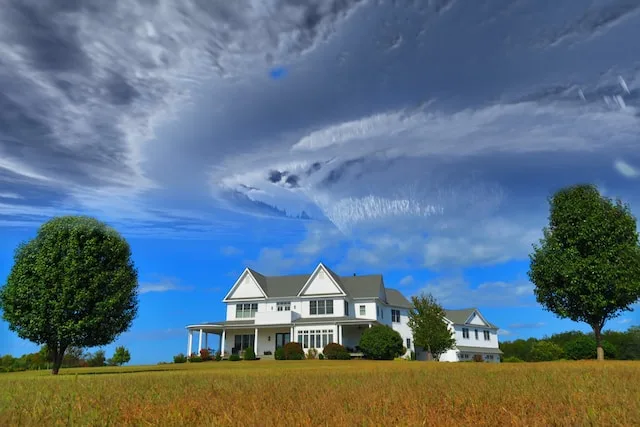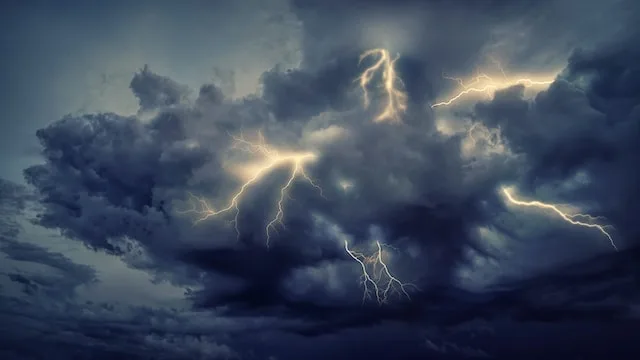What Can Happen To A House During, And After, A Heavy Storm?

Heavy storms can be an unpredictable and sometimes dangerous force of nature. No matter where you live, chances are that your home is likely subject to the elements of Mother Nature. Severe weather events such as heavy thunderstorms, tropical storms, hurricanes, and blizzards can cause serious damage to many homes. As a homeowner, it’s important to stay up-to-date on what could happen during one of these extreme storms – both while it is happening (such as roof leaks or shingle loss) as well as after the storm has passed (foundation shifting). By knowing in advance some of the possible horrors that await you after a storm passes through your neighborhood, you may be able to mitigate any post-storm damages by bracing yourself for disaster before it strikes. In this blog post, we will look at how heavy storms can affect houses during and after they pass through an area and offer advice on preparing your own home should disaster strike!
What Can Happen To A House During, And After, A Heavy Storm?
During a heavy storm, one of the most immediate risks to homes is strong wind gusts, which can cause anything from minor to major structural damage. Loose or old roof shingles can be ripped away, leaving the home vulnerable to water leaks and interior damage. Communication antennae and satellite dishes can be dislodged, leading to temporary loss of communication services. This is why regular roof inspections and maintenance are essential to ensuring that your home is properly prepared for the weather. As the storm intensifies, so does the risk of flooding, especially in low-lying areas or places with poor drainage systems.
When floodwater seeps into a house, it can ruin flooring, and warp walls, and potentially cause electrical issues. The dampness may also result in mold and mildew growth, posing a risk to the health of the inhabitants and degrading the structural integrity of the house.
Effects of High Winds, Hail, and Flying Debris
High winds, hail, and flying debris present additional threats before, during, and after a storm. Winds can be incredibly destructive, capable of uprooting trees and sending loose debris flying at high speeds. This flying debris not only poses a threat to the house on impact but can also break windows, leaving the interior of your home exposed to the elements.
Hail, too, has a destructive element to it. Ranging in size from small pellets to baseball-sized chunks of ice, hail can cause significant damage to the outside of your house. It can break windows, chip away at paint, dent cars, and even damage roof shingles, increasing the likelihood of leaks.
Post-storm, it’s not only the physical damage you have to be wary of. Items carried by high winds from other areas could end up in your yard or even inside your house, bringing with them potential dangers such as hazardous materials or biological contaminants.
Water Intrusion and Flooding: Risks to Foundations and Interiors
Water is an insidious and often overlooked threat, particularly when it comes to the long-term impacts on a house. During a heavy storm, water intrusion and flooding pose serious risks to both the foundation and the interior of a home. Flooding can lead to the saturation of the soil surrounding the foundation, increasing the pressure exerted on it. This hydrostatic pressure can lead to foundation cracks, which could result in serious structural instability and costly repairs.
Inside the home, water intrusion can wreak havoc. Not only can it ruin furniture, appliances, and personal items, but it can also cause extensive damage to carpets, hardwood floors, and walls. Water can seep into the electrical system, posing a significant fire risk. Moreover, if water intrusion is not promptly and effectively addressed, it can create a conducive environment for mold and mildew growth.
Fallen Trees and Branches: Structural Damage and Hazards to Homes
Trees and their branches are an often underestimated hazard during heavy storms. When subjected to high winds and water-logged soils, even the sturdiest of trees can be uprooted or have branches snapped off. These fallen trees and branches can cause substantial structural damage to homes, from roofs and windows to walls and even foundations.
A tree falling on a house can puncture the roof, break windows, and if the impact is severe enough, compromise the structural integrity of the home. This can lead to expensive repairs and temporary displacement as the home may be unsafe to occupy until repairs are done. Even smaller branches can pose a risk by breaking windows, denting siding, or damaging outdoor equipment or vehicles.
In conclusion, heavy storms can be a powerful force of nature capable of inflicting serious damage to homes. Homeowners need to stay informed of the potential hazards and take steps to prepare their homes before disaster strikes. This includes regular roof inspections and maintenance, checking for drainage problems, making sure windows are secure, installing hurricane shutters and other protective coverings, trimming trees, and having an emergency preparedness kit ready to go. By taking these steps, homeowners can help minimize the risks of a storm’s aftermath.



